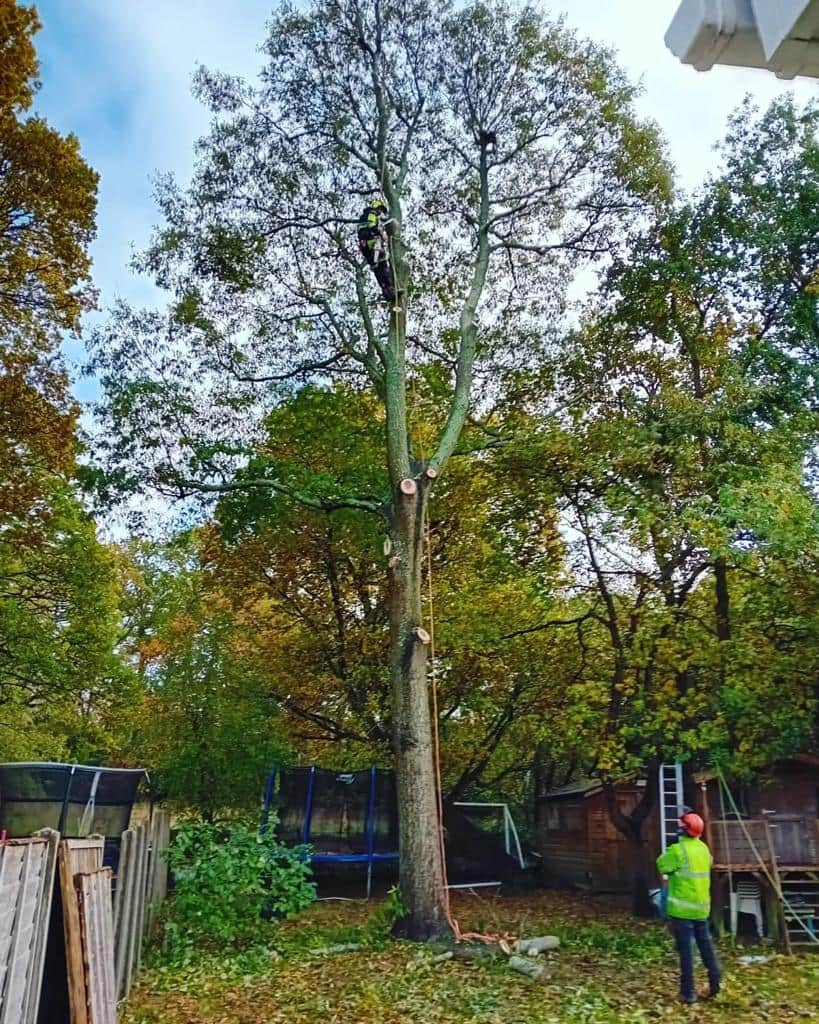Introduction: Stump grinding is a highly effective method for removing unsightly tree stumps from residential and commercial properties. However, concerns about potential damage to nearby structures, such as buildings, fences, and utility lines, can deter property owners from opting for this solution. In this blog post, we’ll address these concerns and provide valuable insights into how stump grinding can be conducted safely to minimise the risk of damage to surrounding structures.
Site Assessment:
- Before commencing stump grinding operations, conducting a thorough site assessment is essential to identify potential hazards and obstacles in the vicinity of the stump. Please take note of nearby structures, including buildings, fences, decks, and underground utilities, and assess their proximity to the stump to determine the level of risk.
Proper Equipment Selection:
- Choose stump grinding equipment suitable for the size and location of the stump and minimise the risk of collateral damage to nearby structures. Smaller, more manoeuvrable stump grinders may be preferable for tight spaces or areas with limited access, while larger machines may be necessary for larger stumps in open areas.
Establish Safety Zones:
- Establish clear safety zones around the stump grinding site to prevent unauthorised access and ensure the safety of workers and bystanders. Use caution tape, cones, or barriers to delineate the perimeter of the work area and restrict entry to authorised personnel only.
Strategic Positioning:
- Position the stump grinder strategically to minimise the risk of debris being ejected towards nearby structures during grinding. Adjust the angle and direction of the cutting wheel to direct wood chips and debris away from buildings, fences, and other vulnerable objects.
Communication and Coordination:
- Maintain open communication with property owners, neighbours, and utility companies to coordinate stump grinding activities and address any concerns or potential risks. Notify neighbours before the planned work and provide reassurance about safety measures being implemented to protect nearby structures.
Skilled Operation:
- Ensure that stump grinding is performed by trained and experienced professionals who understand proper operating procedures and safety protocols. Skilled operators can manoeuvre the equipment with precision and accuracy, minimising the likelihood of accidental damage to surrounding structures.
Post-Grinding Inspection:
- Conduct a thorough inspection of the site after stump grinding is completed to assess for any signs of damage to nearby structures. Address any concerns or issues promptly and take corrective action as necessary to mitigate potential liabilities.
Conclusion: Stump grinding can be conducted safely and effectively with proper planning, equipment selection, and skilled operation. By following these guidelines and addressing concerns about potential damage to nearby structures, property owners can confidently opt for stump grinding as a convenient and efficient solution for tree stump removal.
Call us on: 01329 759 693
Click here to find out more about LM Tree Surgery Fareham
Click here to complete our contact form and see how we can help with your tree’s needs.

